Not many lead singers from an 80’s rock and roll band could write a compelling song about ship scrapping, but then Mark Knopfler is not just any singer/songwriter. Knopfler was born in Glasgow, Scotland on the River Clyde, which was once a major shipbuilding center. In the early 1900s, a fifth of all ships in the world were built on the banks of the River Clyde in Glasgow. There are not many Clyde-built ships left. Most ended up in scrap yards, so far from the Clyde. Mark Knopfler singing “So Far from the Clyde” in a video by Alec Beaton.

Vaquita Photo: Paula Olson, NOAA
Vaquita, a small porpoise found only in the Gulf of California, is the world’s rarest marine mammal, and is in imminent danger of extinction. Now, US Navy dolphins are being trained to locate vaquita in a last-ditch effort to catch and and protect the last few dozen of these critically endangered porpoises.
The vaquita weren’t discovered until 1958 and now are in danger of being wiped out by illegal gill-netting by fishermen in the Gulf of California, also known as the Sea of Cortez. The vaquita are being caught and drowned in gill-nets set by fishermen trying to catch totoaba, a fish whose swim bladder is a prized delicacy in China.
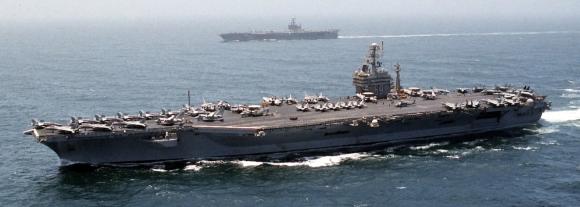 The aircraft carrier USS Dwight D. Eisenhower is big. Like other Nimitz class carriers, it is over 1000′ long on the waterline, wit a beam of 244′ and is powered by nuclear steam plant which develops a quarter of a million horsepower. It has a crew of 3,200 with an additional air wing of 2,480. Recently, although briefly, it added a few additional temporary crew.
The aircraft carrier USS Dwight D. Eisenhower is big. Like other Nimitz class carriers, it is over 1000′ long on the waterline, wit a beam of 244′ and is powered by nuclear steam plant which develops a quarter of a million horsepower. It has a crew of 3,200 with an additional air wing of 2,480. Recently, although briefly, it added a few additional temporary crew.
 The Telegraph in the UK is reporting on two notionally related projects associated with the 400th anniversary of the sailing of the Mayflower to North America. The first is a virtual reality project led by the Human Interface Technologies Team, at the University of Birmingham which is aiming to recreate the Mayflower of 1620, plank by plank and will allow modern visitors to walk around the old ship while wearing a virtual reality headset. It sounds like great fun and could be a great way to learn about the ship and the history directly.
The Telegraph in the UK is reporting on two notionally related projects associated with the 400th anniversary of the sailing of the Mayflower to North America. The first is a virtual reality project led by the Human Interface Technologies Team, at the University of Birmingham which is aiming to recreate the Mayflower of 1620, plank by plank and will allow modern visitors to walk around the old ship while wearing a virtual reality headset. It sounds like great fun and could be a great way to learn about the ship and the history directly.
The second project, I am not so sure about. It is described as follows: “a new futuristic version of the Mayflower, which is fully autonomous, is being built and will become the first unmanned vessel to cross the Atlantic Ocean in 2020.” From the graphic, it appears to be a sail and solar powered trimaran drone.
Two immediate issues come to mind. Continue reading
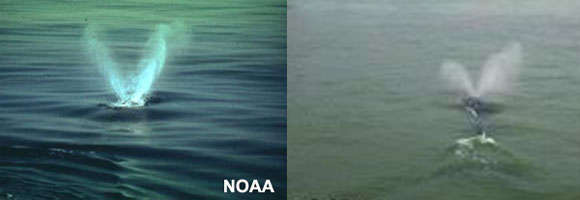
Right: NOAA photo of right whale spout, Left: NYPD photo of whale in East River
Yesterday we posted about a whale swimming in New York’s East River. It was originally identified by the police as a humpback, but their photograph of the whale’s spout now makes it highly likely that the whales was in fact an endangered right whale. Given that whales are almost entirely underwater while swimming, it can be hard to identify one species from the next. One way to do so, is by their spouts. Whales, of course, do not actually spout water from their blowholes. What we see as a whale’s spout is the hot moist air being expelled from the whale’s lungs condensing as it hits colder air.
The reason that many think that the whale sighted in the East River is an endangered right whale is because of the spout photographed by the New York Police Department. The photo to the right, above, shows a right whale spouting. The photo the left is of the whale in the East River taken by the NYPD on Saturday. Both have the same distinctive “V” shape. Humpback whale spouts are usually a single vertical column as shown in the graphic below.
#Harbor spotted another whale in the E. River this morning right next to Gracie Mansion. Even the wildlife want to ring in #NYE2017 in #NYC pic.twitter.com/oQNbnGBirm
— NYPD Special Ops (@NYPDSpecialops) December 31, 2016
A whale was seen swimming in New York’s East River on Saturday. The whale was spotted at around 10AM along the shore of Manhattan’s upper East Side, close to Gracie Mansion, where the mayor lives. The initial police report identified the whale as a humpback. Based on the shape of the whale’s spout it appears to be an endangered right whale.
Happy New Year! Every year for more than the last fifty years, brave or foolhardy Dutch men, women, and children have been celebrating New Year’s Day by jumping into the sea. Called the ‘Nieuwjaarsduik‘ (New Year’s dive), an estimated 25,000 or so plunge into the icy water each January 1st, at some 60 locations across the Netherlands. The largest dive takes place yearly at the seaside resort of Scheveningen, where typically 10,000 or so hardy souls put on little red knot caps, run screaming into the ocean and then run screaming back. Here is a video of the bone-chilling festivities at Scheveningen last year.

Photo: Brad Horrigan/The Hartford Courant
The Hartford Courant describes the new Thompson Exhibition Building, on the northern end of the 19-acre Mystic Seaport Museum as sitting “like a piece of 21st-century abstract sculpture in the midst of a 19th-century fishing village.” Chad Floyd, one of the architect involved in the design, says that the Thompson is “not intended to evoke a historical maritime theme like the legendary seaport. Rather, the building calls to mind the sea itself.” Well, OK then.
I will reserve judgement on the structure until I see it in person. The structure may seem less jarringly out of place when viewed first hand than it appears to be in the photographs. Be that as it may, the Thomson Building’s Collins Gallery is the site of a new museum exhibit, “SeaChange,” which looks very interesting. The museum describes the exhibit as follows:
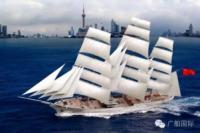 There are roughly twenty sail training ships operated by navies around the world, to help prepare their officers for command at sea. Now China is adding to the fleet. China’s first modern sail training ship is an 85 meter long, 1,200 ton displacement, three masted square-rigger, to be named Polang, which has been under construction since May 2016 at Guangzhou Shipyard in southeastern China on the Pearl River. The ship will set 2,600 square meters of sail and will accommodate 50 cadets. It is expected to be delivered by the end of 2017.
There are roughly twenty sail training ships operated by navies around the world, to help prepare their officers for command at sea. Now China is adding to the fleet. China’s first modern sail training ship is an 85 meter long, 1,200 ton displacement, three masted square-rigger, to be named Polang, which has been under construction since May 2016 at Guangzhou Shipyard in southeastern China on the Pearl River. The ship will set 2,600 square meters of sail and will accommodate 50 cadets. It is expected to be delivered by the end of 2017.
In preparation for the delivery of Polang, a new training ground has been built ashore at the Dalian Naval Academy. The shore-side facility, which opened in December, features a 32 meter steel mast with yards, booms and rigging to allow training in going aloft and setting and furling sails.
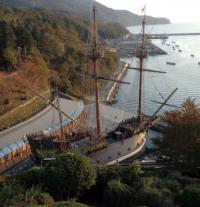 I love stumbling across bits of history that are completely new to me. The Japanese galleon San Juan Bautista is a good example. The San Juan Bautista was one of the first Western-style sailing ships to be built in Japan. The ship, also known as the Date Maru, 伊達丸, sailed across the Pacific in 1614 to Acapulco, Mexico, carrying 180 people in a Japanese diplomatic mission whose goal was to establish trade with Mexico. Hasekura Tsunenaga, the Japanese envoy, and his retinue traveled across Mexico to Vera Cruz where they caught a ship that would take them to Europe and Rome where they attempted to negotiate a treaty with the Pope and the King of Spain.
I love stumbling across bits of history that are completely new to me. The Japanese galleon San Juan Bautista is a good example. The San Juan Bautista was one of the first Western-style sailing ships to be built in Japan. The ship, also known as the Date Maru, 伊達丸, sailed across the Pacific in 1614 to Acapulco, Mexico, carrying 180 people in a Japanese diplomatic mission whose goal was to establish trade with Mexico. Hasekura Tsunenaga, the Japanese envoy, and his retinue traveled across Mexico to Vera Cruz where they caught a ship that would take them to Europe and Rome where they attempted to negotiate a treaty with the Pope and the King of Spain.

“Fat Leonard” Glen Francis
In a time of major cyber hacks and theft from data breaches, the Navy continues to be rocked by an old fashioned bribery scandal, the worst in Navy history. The scandal that has also revealed a massive national-security leak, which some describe as being the worst to hit the Navy since the end of the Cold War.
In September of 2013, Navy investigators arrested a 350 pound Malaysian businessman,Leonard Glenn Francis, who was CEO of Glenn Defense Marine Asia (GDMA), a contractor who provided port services to the US Navy. Known universally as “Fat Leonard,” Francis was charged with paying bribes, providing prostitutes and handing out Lady Gaga tickets to naval officers in exchange for classified information to be used to help direct business to GDMA.
Since then the Navy has charged 12 people. An admiral and nine other Navy personnel have pleaded guilty to federal crimes. Five other defendants still face charges and the investigation is ongoing. Here are the latest convictions:
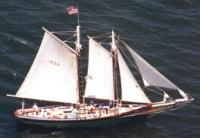 The schooner Mary E is coming home to the Bath, Maine on the Kennebec River where she was built in 1906. She is believed to be believed to be the oldest Bath-built wooden vessel still afloat, as well as the oldest fishing schooner built in the state of Maine still sailing. The Maine Maritime Museum is purchasing the schooner from her current owner Matt Culen of Pelham, N.Y., who has been operating Mary E in partnership with the Connecticut River Museum, in Essex, CT.
The schooner Mary E is coming home to the Bath, Maine on the Kennebec River where she was built in 1906. She is believed to be believed to be the oldest Bath-built wooden vessel still afloat, as well as the oldest fishing schooner built in the state of Maine still sailing. The Maine Maritime Museum is purchasing the schooner from her current owner Matt Culen of Pelham, N.Y., who has been operating Mary E in partnership with the Connecticut River Museum, in Essex, CT.
As reported by the CAMM News blog: Built in Bath in 1906 by shipbuilder Thomas E. Hagan (in a shipyard located where Bath Iron Works stands today), and restored in Bath in 1965 by William R. Donnell II (on the grounds of what is now Maine Maritime Museum), Mary E is a two-masted clipper schooner with a sparred length of 73 feet. This is the last of 69 vessels built by Hagan and representative of the type of vessel that would have been seen all over the coast of Maine in the 1900s. Continue reading
 Recently, we posted about two possible water worlds orbiting around Kepler-62. While just slightly drier than these potential distant water worlds, so far, our planet is the only one we know of with a stable ocean. This is not to say that our solar system is not soggy. It appears that our solar system is veritably awash in water. Here are six planets or moons, other than the Earth, which scientists believe have liquid water or entire oceans.
Recently, we posted about two possible water worlds orbiting around Kepler-62. While just slightly drier than these potential distant water worlds, so far, our planet is the only one we know of with a stable ocean. This is not to say that our solar system is not soggy. It appears that our solar system is veritably awash in water. Here are six planets or moons, other than the Earth, which scientists believe have liquid water or entire oceans.
Continue reading
It is a brisk Christmas morning on the west bank of the Hudson River and I will admit that I wouldn’t mind being a warmer climate right now. So, in the spirit of the holidays, here is a compilation video from Epic Surf of all the Surfing Santas any of us will ever possibly need.
We have posted about lobster pot Christmas trees before, but this one is rather different. On Canada’s Cape Sable Island the lobster pot tree is decorated with pot buoys with the names of fishermen. Some are still going out to sea, but many of the buoys are in remembrance of fishermen lost at sea, family members who have crossed the bar and will never return to port.
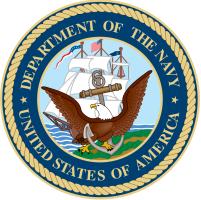 In the end of September, the U.S. Navy announced that it would be eliminating the rating system that they had used for the past 241 years in the ranks of enlisted sailors. The old system, which used 91 ratings, would be abolished. A Fire Controlman 1st Class and a Machinist’s Mate First Class would both be referred to simply as Petty Officers 1st Class. While the admirals may have thought that this was a good idea, no one else apparently did. Earlier this week, Chief of Naval Operations Adm. John Richardson said essentially, “Nevermind. We’ll stick with the old system for now,” or words to that effect. Specifically, the NAVADMIN message, said, in part:
In the end of September, the U.S. Navy announced that it would be eliminating the rating system that they had used for the past 241 years in the ranks of enlisted sailors. The old system, which used 91 ratings, would be abolished. A Fire Controlman 1st Class and a Machinist’s Mate First Class would both be referred to simply as Petty Officers 1st Class. While the admirals may have thought that this was a good idea, no one else apparently did. Earlier this week, Chief of Naval Operations Adm. John Richardson said essentially, “Nevermind. We’ll stick with the old system for now,” or words to that effect. Specifically, the NAVADMIN message, said, in part:
Since we made the initial rating modernization announcement in September, the SECNAV, MCPON and I, along with other Navy leadership, have had the opportunity to speak with thousands of Sailors during our travels throughout the fleet. The feedback from current and former Sailors has been consistent that there is wide support for the flexibility that the plan offers, but the removal of rating titles detracted from accomplishing our major goals. Furthermore, there has been a solid body of thoughtful input that pointed out that there is a way to have the benefits of the rating modernization program without removing rating titles. Continue reading
 In honor of the holiday season, a repost from 2012.
In honor of the holiday season, a repost from 2012.
We recently learned that good Saint Nicholas, long associated with Christmas and gift-giving, is also the patron saint of ships and sailors. The St. Nicholas Center notes: “Many ports, most notably in Greece, have icons of Nicholas, surrounded by ex-votos of small ships made of silver or carved of wood. Sailors returning safely from sea, place these in gratitude to St. Nicholas for protection received. In some places sailors, instead of wishing one another luck, say, “May St. Nicholas hold the tiller.”
Icy images on the first day of winter — the St. Joseph inner and outer lighthouses sit on a pier at the entrance to the St. Joseph River on Lake Michigan. The two lights were built in 1906 and 1907 and were decommissioned in 2005. The outer light is famous for the coating of ice it acquires in winter storms. Here is a drone video of the two lights. Thanks to Irwin Bryan for passing the video along.
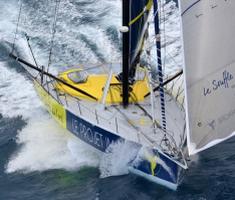 The seas are growing increasingly cluttered. In addition to all the other hazards of the sea, floating objects are a serious threat to sailors. So far, of the original 29 competitors in the Vendee Globe singlehanded around the world race, 5 have been forced to retire after being damaged by collisions with UFOs, unidentified floating objects. Another boat, Hugo Boss, sailed by Alex Thomson, lost a foil daggerboard to a UFO, but has managed to keep sailing, and is now still in second place. Three other Vendee Globe racers have retired for reasons not related to collisions — two due to dis-masting and the other from damage to a foil in heavy weather.
The seas are growing increasingly cluttered. In addition to all the other hazards of the sea, floating objects are a serious threat to sailors. So far, of the original 29 competitors in the Vendee Globe singlehanded around the world race, 5 have been forced to retire after being damaged by collisions with UFOs, unidentified floating objects. Another boat, Hugo Boss, sailed by Alex Thomson, lost a foil daggerboard to a UFO, but has managed to keep sailing, and is now still in second place. Three other Vendee Globe racers have retired for reasons not related to collisions — two due to dis-masting and the other from damage to a foil in heavy weather.
A rundown of the collisions with UFOs:
Continue reading
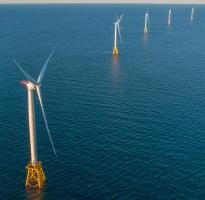 The great news is that the first US offshore wind farm is now online. Five 6 MW wind turbines installed by Deepwater Wind have begun commercial operation off Block Island, RI. The turbines should generate enough electricity for 17,000 homes. It is an important first step toward developing clean and efficient wind energy off the shores of the United States. Compared to other industrialized regions, however, it is only a baby step. As of the middle of 2016, European offshore wind farms in the North Sea, the Irish Sea and the Baltic had 3,334 grid connected wind turbines with a capacity of 11,538 MW. Projects totaling another 21.7 GW have already been approved.
The great news is that the first US offshore wind farm is now online. Five 6 MW wind turbines installed by Deepwater Wind have begun commercial operation off Block Island, RI. The turbines should generate enough electricity for 17,000 homes. It is an important first step toward developing clean and efficient wind energy off the shores of the United States. Compared to other industrialized regions, however, it is only a baby step. As of the middle of 2016, European offshore wind farms in the North Sea, the Irish Sea and the Baltic had 3,334 grid connected wind turbines with a capacity of 11,538 MW. Projects totaling another 21.7 GW have already been approved.
While the US has been very slow to get started in offshore wind energy, the potential is huge. The U.S. Department of the Interior has awarded 11 commercial leases for offshore wind development that could support a total of 14.6 gigawatts of capacity. The Department of Energy estimates that if a [potential] 86 GW of offshore wind … were installed by 2050, offshore wind would make up 14% of the projected demand for new electricity generation in the coastal and Great Lakes states. That is roughly enough electricity to power 31 million homes.
So, yes, Deepwater Wind’s 30 MW project is a great start, but we are a long way from where we need to be.
